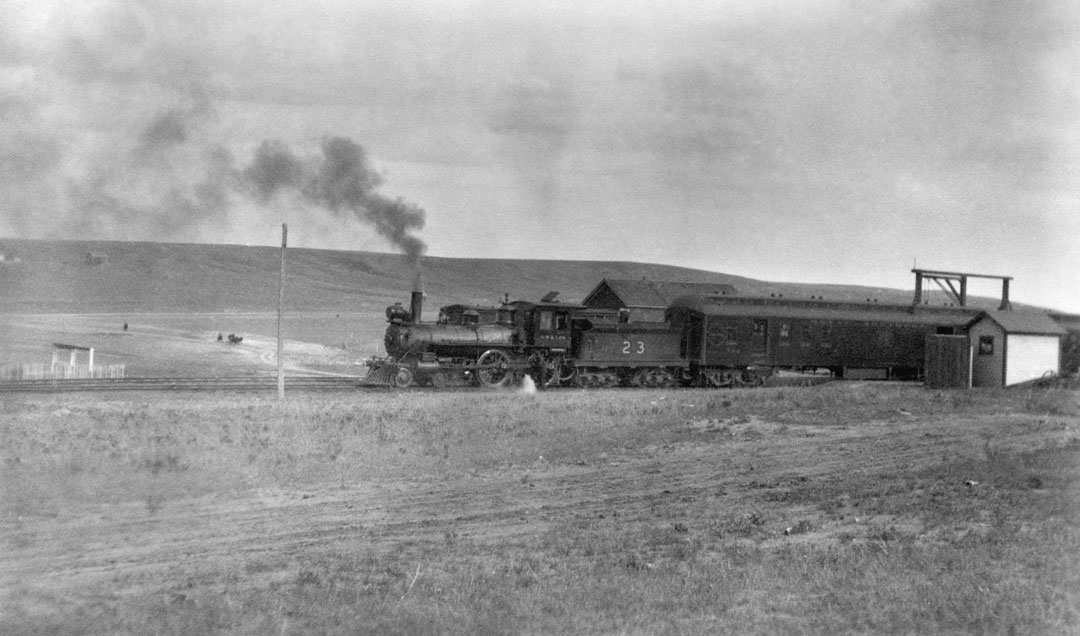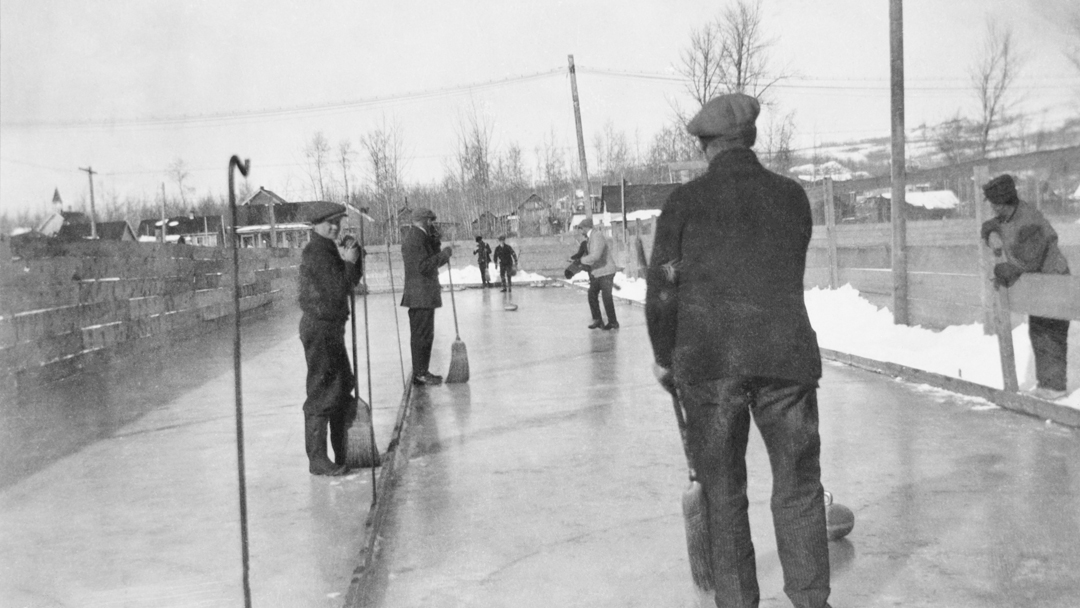AGAINST THE GRAIN
ROLLING DOWN THE TRACK
One of the first major “crops” exported from southern Alberta to U.S. markets was coal. This train, owned by the Alberta Railway and Coal Company (although the line appears to have had several different names), is making the run in 1912 between Lethbridge, AB, and Great Falls, MT, passing through the Coutts/ Sweetgrass border crossing carrying both coal and passengers.
The rail line was part of the plan by Sir Alexander Galt, one of Canada’s Fathers of Confederation, to settle the Canadian West. The first part of the project was a narrow-gauge (three foot) rail line called the North Western Coal and Navigation Company. It was built between 1884 and 1885 between coal mines in Lethbridge and the main Canadian Pacific Railway line at Dunmore, just east of Medicine Hat. Coal used to be shipped by barge down the Oldman River, but once the rail line was built, CP agreed to buy at least 20,000 tons of coal per year for $5 per ton.
To further develop the unsettled territory, Galt incorporated the Alberta Railway & Coal Company and, in 1889, with money from private investors, built a 105-kilometre narrow-gauge line from Lethbridge to Coutts. It was later upgraded to standard gauge.
To complete the project, the Galt family received a Montana charter to build another narrow-gauge line between Great Falls, MT, and the Canadian border, linking up the Lethbridge-to-Coutts line. It took 108 days to build the stretch of track known as the Great Falls & Canada Railway line, which opened in the fall of 1890. The U.S. side of the rail line was upgraded to standard gauge in 1901 and sold to the Montana Great Northern Railway.
While these rail lines for coal were being developed in the late 1800s, the Galt family also saw the potential to develop the agriculture industry. The Government of Canada was keen on immigration, so between 1886 and 1901 the Alberta Railway and Coal Company (later to be called the Alberta Railway and Irrigation Company) was granted access to a solid block of 500,000 acres adjacent to the St. Mary River. The company contacted Charles Ora Card, an official with the Mormon Church in Utah, and members of the church began moving to southern Alberta. They brought with them the know-how to begin development of southern Alberta’s irrigated crop production industry.







Comments